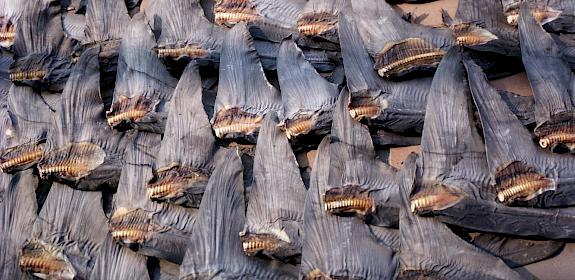- »
- Publications »
- Reports »
- The great salmon run: Competition between wild and farmed salmon
Published 7 March 2007
Wild vs farmed salmon: what's the catch?
Cambridge, UK, 7 March 2007—A new report, the first to take a comprehensive look at market competition between wild and farmed salmon, sheds new light on the contentious and complex issues surrounding the salmon industry.
The great salmon run: Competition between wild and farmed salmon
Report author(s):
Gunnar Knapp, Cathy A. Roheim, James L. Anderson
Publication date:
March 2007
key findings
The great salmon run: Competition between wild and farmed salmon, released by TRAFFIC, the wildlife trade monitoring network, identifies two important trends that have remade the salmon industry in the last 25 years: farmed salmon has grown from just two percent of the world supply in 1980 to 65 percent in 2004.
About three-quarters of the fresh and frozen salmon consumed in the USA is now farmed. In response, the value of the North American wild fishery has plummeted, as indicated by the decline in the value of annual Alaska salmon catches from more than USD800 million in the late 1980s to less than USD300 million today. The decline in value of wild salmon catches has had wide-ranging economic and social effects on wild salmon fishermen and fishing communities.
Wild salmon could never supply the market demand being met by farmed salmon. A fundamental point of the report is that the debate should not be about wild versus farmed, but whether each method of production is being done right
Dr. Gunnar Knapp, professor of economics at the University of Alaska, Anchorage, and one of the study’s authors
The report found that the rapid growth in farmed salmon has dramatically increased total salmon supply, changed the kinds of salmon products that are available, altered the timing of production and raised market quality standards. These changes have raised economic, environmental and trade questions. For example, how does wild salmon, which no longer provides the bulk of North America’s salmon, remain a competitive product?
One of the report’s recommendations is that Alaskan salmon producers expand the use of labelling provided by the Marine Stewardship Council (MSC) which conveys to consumers that wild salmon come from sustainable fisheries.
“Labelling helps consumers make informed choices,” said Dr Cathy Roheim, co-author of the study and professor of economics at the University of Rhode Island.
- The report also recommends:
- harmonizing regulatory food safety standards;
- recognizing and mitigating environmental impacts of both farmed and wild salmon production;
- providing accurate and balanced information about salmon issues;
- collecting better data about seafood markets and consumers;
- consider the role of hatcheries in wild salmon production.
“This report shines a light on a very complex industry that has a big impact on both people and the environment,” said Jill Hepp of TRAFFIC North America. “Our goal is for this report to now be used by the industry and policy makers to protect wild salmon resources and the fishery that so many people depend on.”
2% of salmon
supplies were from farmed sources in 1980
65% of salmon
stocks were from farmed sources in 2004
< $USD200 million
the worth of North American wild salmon fisheries today




